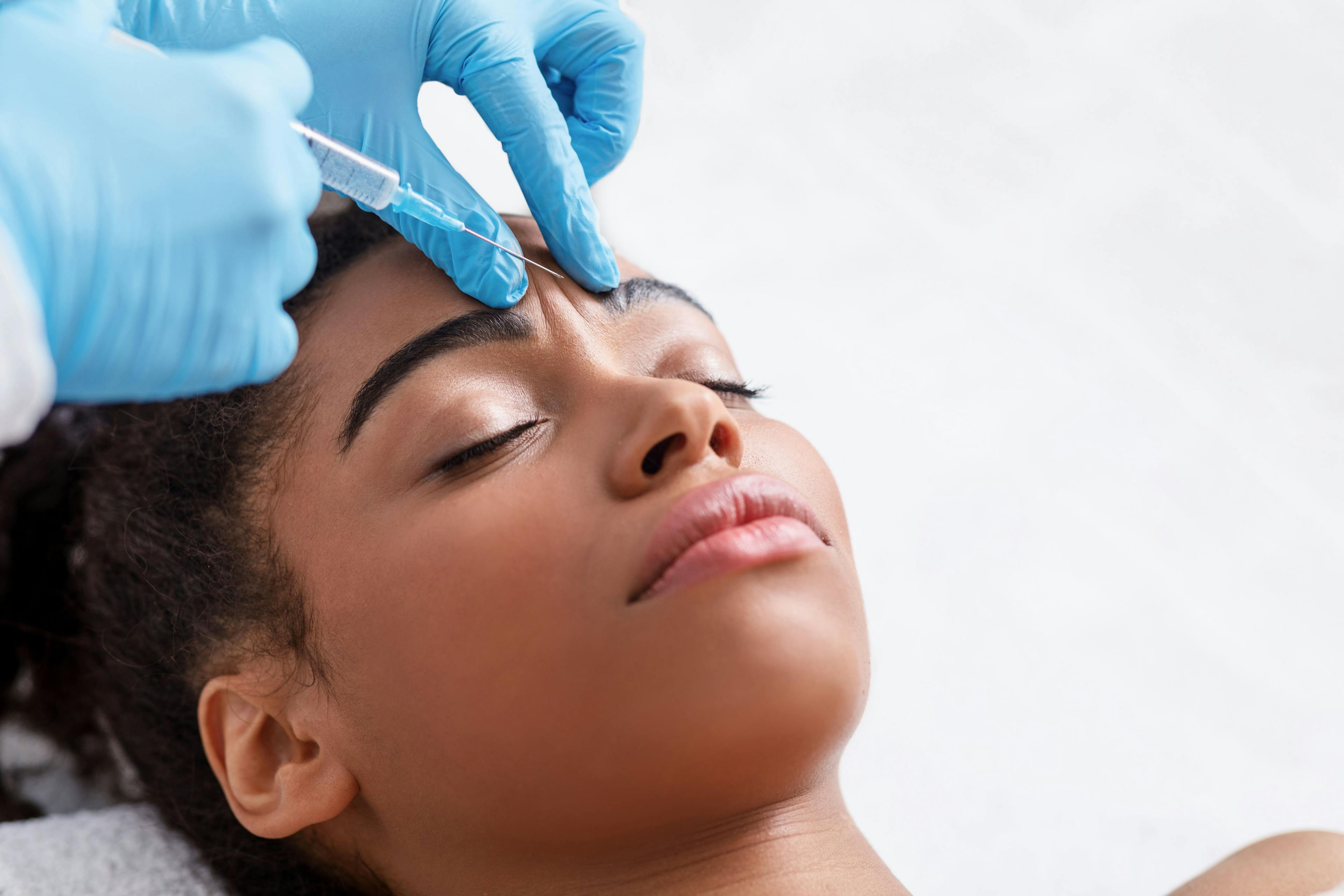- Acne
- Actinic Keratosis
- Aesthetics
- Alopecia
- Atopic Dermatitis
- Buy-and-Bill
- COVID-19
- Case-Based Roundtable
- Chronic Hand Eczema
- Chronic Spontaneous Urticaria
- Drug Watch
- Eczema
- General Dermatology
- Hidradenitis Suppurativa
- Melasma
- NP and PA
- Pediatric Dermatology
- Pigmentary Disorders
- Practice Management
- Precision Medicine and Biologics
- Prurigo Nodularis
- Psoriasis
- Psoriatic Arthritis
- Rare Disease
- Rosacea
- Skin Cancer
- Vitiligo
- Wound Care
News
Article
Dermatology Times
Protecting Against Malpractice Liability: Insurance As Your First Line of Defense
Author(s):
David Mandell, JD, MBA, stated in the quest to protect against malpractice liability, insurance is certainly the first and most important line of defense.
Image Credit: © Pixel-Shot - stock.adobe.com

Most dermatologists, at one time or another, have worried about malpractice liability, as it is a reality of practicing medicine. In the quest to protect against malpractice liability, insurance is certainly the first and most important line of defense. We will cover this protective tool first in this article and describe additional tactics to consider in circumstances where insurance coverage cannot do the job.
1. Medical Malpractice Basics
The simplest way to protect one’s assets against malpractice claims is to purchase medical malpractice insurance, as the coverage will typically cover both defense costs and any judgments that might be rendered against the defendant physician—within policy limits. Although a more comprehensive treatment of malpractice insurance goes beyond the scope of this article, the following 2 fundamental factors must be considered before purchasing a medical malpractice policy.
Claims-Made vs Occurrence-Based Policies
A claims-made insurance policy provides coverage only for incidents that occurred and were reported while you are insured with that carrier. Thus, both the incident and the filing of the claim must happen while the policy is in effect. On the other hand, occurrence coverage provides lifetime coverage for incidents that occurred while the policy was in effect, regardless of when the claim is filed. Thus, if you had an occurrence-type policy in effect for the calendar year 2021 and a patient filed a claim in 2023 for an incident that happened during 2021, the policy covers you for that claim even if you no longer have insurance with that carrier.
Claims-made policies are typically cheaper than occurrence policies for the first several years of coverage because the potential for claims builds slowly as policy years accumulate. In comparing costs of malpractice insurance policies, be sure to ask how much the premium will increase after the first year.
Coverage Limits
All policies have coverage limits, with $1 million to $3 million being quite common. The first number is the maximum amount the insurance company will pay per claim during the policy period, which is usually 1 year. The second amount is the maximum the company will pay for all claims during the same policy period. If there are claims or judgments against you, you will be personally responsible for paying any damages that exceed your insurance policy limits.
What coverage limits are reasonable in your practice may depend on several factors, including the litigation award history in your area, whether or not your state has caps on noneconomic damages in malpractice actions, and what acts it covers. Be sure to work with an experienced agent to determine the right coverage limits and type of policy for you.
Insurance Policies for Practice Owners
Another type of insurance that offers wider protections for practice owners is a business owner’s policy (BOP). Some of the coverage options for which dermatologists might need a BOP include the following:
- Accidents on premises (personal injury liability)
- Violation of fiduciary duty for physicians acting as a trustee on a qualified retirement plan
- Billing issues, including overbilling and improper billing
- Health Insurance Portability and Accountability Act– and privacy-related issues
- Business continuation/interruption
- Employee issues, including accusations of sexual harassment or a hostile work environment, wrongful termination, and worker’s compensation
- Violation of Anti-Kickback Statute rules
- Cybersecurity for damages due to a data breach, being unable to access the system, and ransomware
Dermatologists may also need to consider commercial rental or property insurance, depending on the space where their office operates.
2. Beyond Insurance: Asset Protection
It is certainly possible for malpractice awards to exceed insurance limits or for other types of claims to be excluded from BOP coverages. For these reasons, many dermatologists choose to buttress their insurance with asset protection planning.
The goal of asset protection planning is to position a doctor’s assets in a way that makes it difficult—and in certain cases, nearly impossible—for a potential lawsuit plaintiff to gain access to them. If the goal for a physician is to feel more secure knowing that they will not lose what they have worked hard to build, then asset protection planning is an important part of the solution.
Personal asset protection encompasses shielding the physician’s home, retirement accounts, other investment accounts, second home or rental real estate, and valuable personal property.
We typically recommend leveraging your state’s exempt assets as a priority, because they enjoy the highest level of protection and involve no legal fees, state fees, accounting fees, or gifting programs. In other words, you can own the exempt asset outright in your name, have access to any values, and still have it 100% protected from lawsuits against you.
Each state law specifies assets that are absolutely exempt from creditor claims. These may include qualified retirement plans and individual retirement accounts, cash within life insurance policies, annuities, and primary homes. Make sure you seek an expert on this to determine the exemptions in your state.
Beyond exempt assets, basic asset protection tools such as limited liability companies (LLCs), along with certain types of trusts, can be used. LLCs can provide good asset protection against future lawsuits, allow you (the client) to maintain control, and provide estate and income tax benefits in certain situations. For these reasons, we often call LLCs the building blocks of a basic asset protection plan. Irrevocable trusts can also play an important role in asset protection planning.
The asset protection benefits of all legal tools are dependent on proper drafting of the documentation, proper maintenance and respect for formalities, and proper ownership arrangements. Working with an experienced asset protection attorney will ensure that these details are handled well. If all these are in place, the dermatologist can have solid asset protection for a relatively low cost.
Conclusion
The practice of medicine has inherent lawsuit risks, including those from medical malpractice. Malpractice insurance and asset protection planning combine to help dermatologists reduce their risk of liability and protect them in case liability does occur.
David Mandell, JD, MBA, is an attorney and author of more than a dozen books for doctors. He is a partner in the wealth management firm OJM Group (www.ojmgroup.com) and can be reached at 877-656-4362 or mandell@ojmgroup.com.
Disclosure
OJM Group, LLC, (“OJM”) is a US Security and Exchange Commission (SEC)–registered investment adviser with its principal place of practice in the state of Ohio. SEC registration does not constitute an endorsement of OJM by the SEC nor does it indicate that OJM has attained a particular level of skill or ability. OJM and its representatives are in compliance with the current notice filing and registration requirements imposed upon registered investment advisers by those states in which OJM maintains clients. OJM may only transact practice in those states in which it is registered or qualifies for an exemption or exclusion from registration requirements. For information pertaining to the registration status of OJM, please contact OJM or refer to the Investment Adviser Public Disclosure website www.adviserinfo.sec.gov.
For additional information about OJM, including fees and services, send for our disclosure brochure as set forth on Form ADV using the contact information herein. Please read the disclosure statement carefully before you invest or send money.
This article contains general information that is not suitable for everyone. The information contained herein should not be construed as personalized legal or tax advice, or as a recommendation of any particular security or strategy. There is no guarantee that the views and opinions expressed in this article will be appropriate for your particular circumstances. Tax law changes frequently, accordingly, information presented herein is subject to change without notice. You should seek professional tax and legal advice before implementing any strategy discussed herein.

Newsletter
Like what you’re reading? Subscribe to Dermatology Times for weekly updates on therapies, innovations, and real-world practice tips.






























